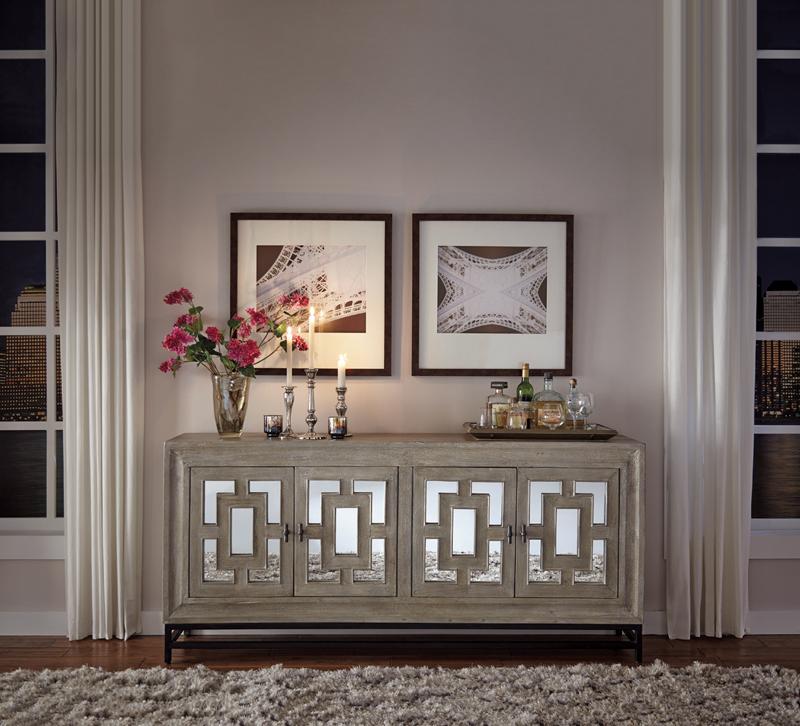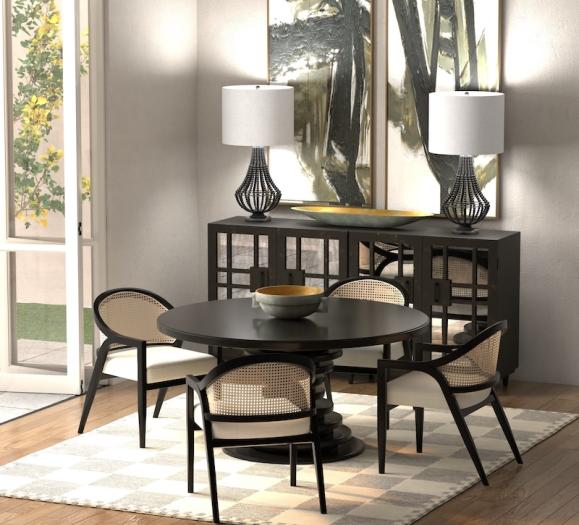Dramatic disruptive trends have reared their heads in the luxury interior design industry, according to a new study from Unity Marketing and The Home Trust International.
To-The-Trade Interior Design Industry Disrupted, released this week, found that interior designers and companies that sell exclusively to-the-trade are facing major problems. As affluent consumer shopping habits have changed and more information on trends and products becomes easily available through the internet, the demand for exclusive products and design has significantly dropped, and both designers and manufacturers are feeling the effects.
"The traditional to-the-trade distribution model based upon exclusive sales to and through designers is broken," the study reads. "As a result, a growing number of previously to-the-trade exclusive companies have opened their doors for direct-to-consumer sales."
This means a big shake-up for designers and the lighting and home furnishings industry as a whole. Here's what you need to know about these interior design industry disruptors — and what co-researcher Pamela N. Danziger, President of Unity Marketing, says should be done.
Open access
Traditionally, the draw of hiring an interior designer revolved around their exclusive access to high-end lighting and home furnishings. Before the massive adoption of the internet, this was a great deal for consumers. They got a designer with superior design skills and access to luxury furnishings they'd never find elsewhere.
As more consumers become comfortable with e-commerce through experience and advances in augmented and virtual reality, those dynamics have shifted. Consumers have greater access to information about products and brands as well as better access to products at a lower price point. They've also found ways around that to-the-trade exclusivity because manufacturers have started selling products online — bypassing designers entirely.
Of the 119 home marketers that sell to-the-trade who responded, 59 percent said that over half of their company's total revenue came from sales to 'to-the-trade exclusive' partners, 22 percent figuring between 50 and 74 percent and 27 percent between 75 and 99 percent. Only 10 percent said that 100 percent of their business comes from to-the-trade-exclusive partnerships. Interestingly, a whopping 31 percent said that total revenue fell between 1 and 25 percent.
But manufacturers bypassing designers is only half the story. Bowing to consumer needs and wants, more designers are finding products through Restoration Hardware, Wayfair, IKEA and Pottery Barn. In fact, of the 322 design professionals surveyed, 27 percent said they don't buy anything from to-the-trade companies, and 47 percent said they bought between 50 and 100 percent of their products from to-the-trade companies.
The study's findings show that designers too are using different resources to meet consumer demands.
"They are doing very much the same thing that consumers are doing, which is going to the markets to see the products and learn the trends then shopping through other sources to find comparable, look-alike, and probably cheaper products that can substitute for the exclusives," Danziger says.
The need for exclusivity appears to be waning, while the desire for faster shipping seems to be growing. As more consumers get used to Amazon's two-day shipping, they will expect other companies to offer similar shipping options.
Strength in DIY
Somewhat surprisingly, the DIY movement reached affluent consumers. Though they may have the income to spend on a designer or other home professional, they seem to want to take a crack at their home projects themselves. Despite the fact that the number of U.S. households making more than $250,000 per year has grown 50.4 percent from 2010 to 2015 (2.5 million to 3.8 million households), the yearly revenue for interior design services hasn't quite reached its pre-recession levels. Though the most recent numbers haven't been released yet, the study estimates that current yearly revenues still fall somewhere between 3 and 14 percent below pre-recession revenue.
A big reason for this is the DIY movement, made popular by a combination of HGTV and Pinterest. The study found that designers frequently site DIY as their number one threat. But why — with all that income — are people striking out on their own and trying DIY projects themselves? Hint: It's not about the money.
As we've reported, DIY magazines and TV shows tend to give unrealistic expectations about DIY projects, making them look easier and less time-consuming than they really are, but that's only half the story. Danziger says DIY projects give consumers an emotional charge.
"They look at such projects as a way to express their creativity, which is emotionally rewarding indeed," she says.
What's more, decorating and designing is, well, fun. Consumers like picking out furniture, choosing paint colors and planning their homes. They like feeling accomplished when the paint dries and their home becomes a better reflection of their tastes and styles. Decorating takes less technical work than rewiring a home and less labor than tearing down and adding walls, so for consumers that want a new look but not a new layout, why pay for what you're willing (and excited) to do yourself?
Danziger says offering products from exclusive to-the-trade manufacturers is no longer enough of a draw for consumers. Nor is being an authority on colors and patterns.
"They need to market the luxury of professional design services around the life-enhancing experiences the homeowner will receive, not just stylish products they will fill the house with," she says.
What now?
So when faced with DIY and ease of access to great products, what's a designer to do? Be a better marketer, that's what.
Danziger says marketing will make or break design professionals. It's now up to designers to better communicate their value to clients, explain their services more effectively and demonstrate their value over DIY and Wayfair.
An easy way to do this right now is to revamp the content on your business website to make it less vague and all-inclusive. Listing services in broad terms like "residential design" will no longer be enough.
"Designers need to drill down to the specifics about what their approach to 'residential design' really means to that specific client," Danziger explains. "By narrow-casting their value proposition to what their approach to design can mean to each client, and positioning their services and approach as unique and what they can’t get elsewhere, they will greatly enhance their hit rate."
Take a second look at your About and Services pages. How clear are they? Can clients get an accurate understanding of what working with you will be like? These pages are the best places to walk consumers through your design process and describe what working with you will be like. Talk about the tools and technologies you'll use to build their project
You might also take time to talk about your experience fixing DIY disasters. Discuss why DIY can be a messy option for medium and big projects and illustrate the time and effort clients will save if they hire you instead of going at it alone. Clients considering a DIY project might hire you instead.
Want more on this study? Check it out here: unitymarketingonline.com/shop/home-and-home-furnishings-market/trade-interior-design-industry-disrupted/
Tell us, what are your thoughts on this study? Does it match up with what your clients want and what you're seeing in the market place? Share with us in the comments!







